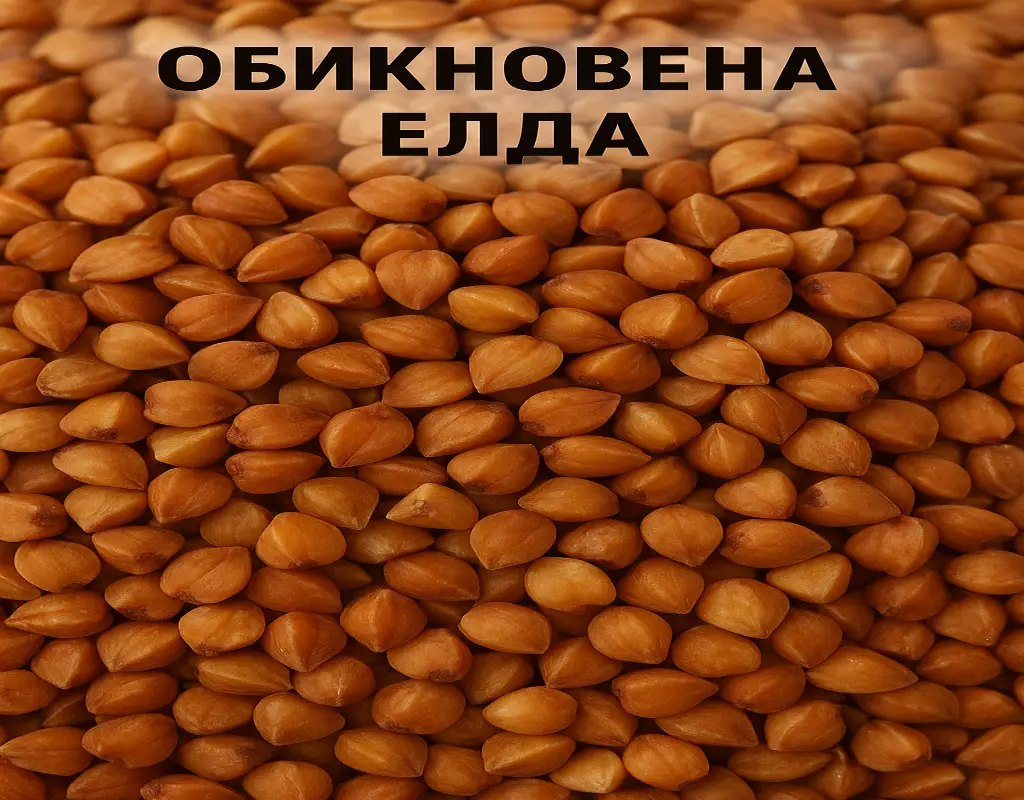Common buckwheat is also known as Обикновена Елда is a potent pseudocereal, which offers a combination of nutrients, flexibility, and taste. While it’s not really a real grain the seeds of this plant are consumed over the long periods of time in Eastern Europe, Asia, as well as throughout the world. In this guide we will explain the unique qualities of buckwheat as well as its main health benefits as well as how to prepare it correctly as well as creative ways to utilize it in the everyday food items. If you’re gluten-sensitive and looking for whole food alternatives or simply looking for new tastes This guide is designed to help. Learn some ways to incorporate these ideas into your kitchen today.
What Is Обикновена Елда
Обикновена Елда (scientific term Fagopyrum Esulentum) is an uncereal plant that thrives in cooler climates, and is able to adapt to different soil types. The seeds are triangular (groats) frequently roasted in order for a deeper the flavor. As it’s not connected to grasses or wheat It is, therefore, free of gluten. It’s the best choice for people who suffer from gluten intolerance or looking for other grain options. The earthy, nutty flavor is more prominent when it’s roasting; raw groats tend to be less sour. According to many different traditions, it was used to make porridge or pancakes as well as flatbreads or as a substitute for rice and standard grains used in food items.
Why Обикновена Елда Is Nutritionally Valuable
A healthy diet is among the most compelling reasons to include Buckwheat in your eating habits. The following are some of its strengths:
-
High-Quality Protein Buckwheat has a significant amount of protein in a single serving, and includes essential amino acids, which many grains do not have.
-
Fiber Content It’s rich in both insoluble and soluble fiber, helping with eating, digestion as well as maintaining a steady blood sugar level.
-
Minerals & Micronutrients Essential minerals such as manganese, magnesium, copper as well as phosphorus are nicely present. They support bone health and also enzymatic functions.
-
Antioxidant Power Buckwheat is a source of bioactive substances (such as quercetin, rutin as well as others flavonoids) which help fight inflammation, guard cells against the effects of oxidative stress and promote the health of your heart.
-
Gluten-Free Profile Gluten-free and naturally free of and a great base for those who are suffering from celiac diseases or adhering to diets that are gluten-free.
Health Benefits You Can Expect
There are concrete methods by which eating regular Buckwheat is beneficial to your health
-
Heart Health Improvement
Regular intake of buckwheat may help reduce cholesterol levels, particularly bad (LDL) cholesterol as well as increase the lipid profile. The antioxidants help support blood vessel function, and reduce inflammation of blood vessels. -
Blood Sugar Control
Thanks to the protein and fiber content as well as its an extremely low glycemic load this product helps in preventing abrupt increases in blood sugar levels after meals. It is therefore beneficial for individuals who are looking to regulate the levels of glucose more consistently. -
Digestive Wellbeing
The fiber found in Buckwheat can help maintain normal stool movements. It also helps support the beneficial gut bacteria and reduces the discomfort caused by bloating and poor digestion. -
weight management as well as Satiety
Because It’s nutritiously rich and filling it can make to feel fuller for longer periods which can help reduce overeating. Its inclusion in your meal can aid in weight loss as long as it is paired with a balanced diet. -
Anti-Inflammatory and Antioxidant Benefits
Its high flavonoid content helps protect against oxidative stress. It also helps lower inflammation levels within the body. This can be linked with a variety of chronic illnesses.
Potential Drawbacks and Things to Watch
For a smart and effective use of buckwheat in a safe manner, bear these tips in your mind:
-
Allergies Certain people suffer from allergies to buckwheat or. If this is the first time, begin by eating a tiny portion of the food and watch for any negative reactions.
-
Modifications to texture and flavor The full replacement of buckwheat flour for baked goods can produce more dense or brittle results. Mixing it with other flours usually will give a more textured texture.
-
Nutritional Absorption and Anti-Nutrients: Raw seeds may have compounds that can hinder mineral absorption. Soaking and roasting or cooking can reduce the effects.
-
Cross-Contamination If you are in need of strictly gluten-free food, make sure the products made from buckwheat are produced in gluten-free facilities.
How to Cook and Use Обикновена Елда
These are the steps to follow and suggestions to integrate Buckwheat into your daily cooking daily routine
-
Cooking Groats (Whole Seeds):
-
Rinse the groats with running water to wash away particles or dirt.
-
Make use of 1 part groats per 2 cups of water. Then, bring to a boil, reduce the heat, cover, and let simmer until the water has been completely absorbed (usually 10-20 mins). Then, off heat, and in a covered container, for several minutes.
-
You can roast the groats on an uncooked pan for 3-4 minutes prior to cooking, in order to enhance their flavor.
-
-
Flour Usage:
-
Buckwheat flour can be used for crepes, pancakes, muffins, and as a component of bread mix. You can use 25 to 50 percent buckwheat in order to create a smoother texture.
-
Mix in rice, wheat or other flours that are gluten-free for better baking structure.
-
-
Meal Ideas & Recipes:
-
Breakfast porridge Make groats and cook, finish with fruits, nuts, and the addition of honey or maple syrup.
-
Grain bowls with a savory flavor Combine cooked buckwheat, cooked vegetables, roasted olive oil, greens and an ingredient like chicken or beans.
-
Crepes and flatbreads: Use buckwheat flour to create thin pancakes or crepes. They are then loaded with cheese, spinach mushrooms, sweet fillings.
-
Salads/Side Dish: Substitute rice or wheat-based side dishes using buckwheat. Add citrus juice, herbs and freshly pressed olive oil.
-
-
Storage tips:
Keep raw grains in airtight containers stored kept in dry, cool places. Flour is best stored in the same way as groats, but used much more frequently so that there is no chance of the risk of rancidity. Buckwheat that has been roasted will have a longer time to last due to the partially cooked, however it has the benefit of a an appropriate storage.
Real Life Example: Integrating Обикновена Елда at Home
Here’s a sample from my kitchen.
For the past week, I’ve substituted pasta or rice three times using buckwheat groats during meals: at dinner and roasted vegetables at lunchtime, I ate a bowl filled with greens, beans, with vinaigrette, and beans; as breakfast in the form of a warm porridge. On day 4 I experienced a greater feeling of fullness at the end of meals, a more consistent energy (no after-dinner depression) as well as more efficient digestion (less constipation). My friend who has a sensitivity to wheat, likewise tolerated the food well and had no difficulties. The taste difference was nice as I cooked the groats initially. They were nuttier and more enjoyable.
A different example is in baking, I tested using a 50-50 mixture of wheat flour and buckwheat flour to make pancakes. The pancakes were a bit more dense, but they were delicious and aromatic when paired with yogurt and fruit.
Simple substitutions like these showed me that even small modifications can result in significant improvements in digestion, energy levels, as well as overall enjoyment of meals.
How to Make Buckwheat Part of Your Daily Diet
For the best results from your creativity and consistency, you must be consistent. The following are top practices to adopt:
-
Prepare for the future and prepare the buckwheat grains every week or once in order to make a ready side dish as a base dish for your food items.
-
Utilize buckwheat flour for only one baking activity per week – pancakes or muffins make you familiar with the texture.
-
Enhance the flavor with spices, herbs or citrus, garlic or even nuts, so that Buckwheat tastes good and not only “healthy.”
-
Blend with lentils (beans and lentils) as well as nuts/seeds, veggies as well as healthy fats for balanced meals.
-
Try rotating the grains/pseudocereals (buckwheat millet, quinoa and Oats) instead of depending solely on one type of cereal to guarantee an array of food choices.
Final Thoughts
Common Buckwheat (Обикновена Елда) can be distinguished as an incredibly nutritious, versatile and non-gluten-containing seed that’s recommended to add to your daily diet. It is loaded with high-quality proteins, fiber and antioxidants, it offers numerous health benefits including heart support blood sugar stability, better digestion, it offers more benefits than most grains. There are definitely concerns about texture and allergies however, with proper cooking and utilization the buckwheat grain can quickly become an integral part of your diet. Make small batches, make sure to cook carefully, play on the flavors. Try a brand different recipe this week made with the buckwheat grain, you’ll definitely notice its benefits, and not only in health but also by the satisfaction of eating nutritious food. We’d like to know: What recipe do you want to test? Let me know in the comments and, if you’ve found it helpful you, please share it with your friends who are also interested in good eating and healthy.
Read More: Everything you need to know about Бишкоти ди Прато
For more engaging content and the latest updates, follow The Bunk knot for insightful articles and fresh perspectives!
Also follow: mastodon.social/@bunkknot


